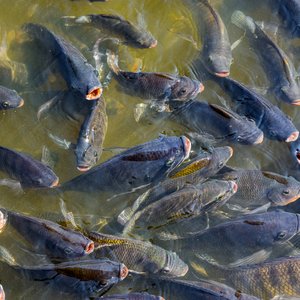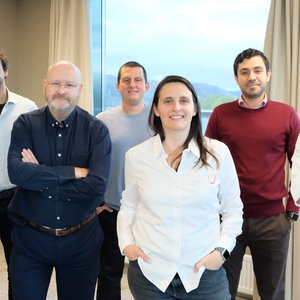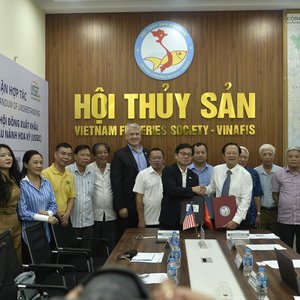As Australia’s mining boom eases a little, and their agrifood products face increasingly stiff competition in global markets, aquaculture could provide new and financially rewarding opportunities for many farmers across Australia.
AgriFood Skills Australia, which became the latest sponsor to engage at the World Aquaculture Adelaide (WAA) event, CEO Arthur Blewitt said “Australian farmers spend most of their lives learning how to grow things – from creating the extensive infrastructure necessary for growing crops, cattle and sheep, right through to getting the fruits of labour off to market after years of hard work.”
“These diverse skills learnt in farming, from the patience and determination necessary to go out every day to feed farm animals or irrigate crops, to the nurturing qualities required to take young farm animals all the way through to market – or seeds through to crops that can be harvested – are the very same skills needed to take on fish farming,” added Mr Blewitt.
“With around half global consumption of seafood now coming from aquaculture, and for the first time in modern history the world is producing more farmed fish than farmed beef, aquaculture is playing an increasingly important role in meeting the challenge of global food security,” said Roy Palmer, Director, World Aquaculture Society and engaged in the organizing committee for WAA.
“I therefore urge Australia’s agricultural farmers to use those tremendous creating, nurturing and growing skills they have developed to help tackle an impending world food shortage – and at the same time provide some extra valuable income on their farms,” Mr Palmer said.
“Wild caught seafood is a finite resource and whilst it can be harvested sustainably well into the future we have to understand that with a global population now at 7 billion and growing, there are limitations on supplies and costs. Clearly the future is about creating, nurturing and growing fish/seafood in a natural environment to supply all our food needs for the future. The future is aquaculture, it is essential for our food security.”
Mr Palmer said the conference, trade show and workshops combine to be the largest primary industry meeting held in Australia and the largest aquaculture event in the southern hemisphere during 2014.
“WAA14, which takes place in June 7-11, 2014 at the Adelaide Convention Centre, will be an opportunity for several thousand people from the international aquaculture community – academics, industry researchers, market and industry analysts, government officials, policy makers, trainers/educators and industry representatives – to present their work and exchange ideas and develop a vision for the future of the aquaculture industry as we focus on the theme of ‘Create, Nurture, Grow,” Mr Palmer said.
Arthur Blewitt concluded “AgriFood Skills Australia is investing in this event and I encourage farmers – and anyone else - interested in moving into one of the fastest growing primary production sectors in the world to consider attending WAA14 to hear about the opportunities and prospects in the aquaculture industry.”
Facts
• FAO’s World Aquaculture 2010 report found that global production of fish from aquaculture grew more than 60 per cent between 2000 and 2008, from 32.4 million tonnes to 52.5 million tonnes.
• FAO says 50 per cent of the world\'s food fish consumption now comes from aquaculture.
• Fish is the world\'s fastest-growing source of animal protein.
• This table is information on Aquaculture Production and highlights the challenge and opportunity for Australia
Aquaculture Production per Continent (2011 figures)
Region Tonnage (Millions) Percentage of Total
Asia 55.5 88.5
America’s 2.9 4.7
Europe 2.7 4.3
Africa 1.4 2.2
Oceania 0.2 0.3
TOTAL 62.7 100
Figures courtesy FAO 2013







